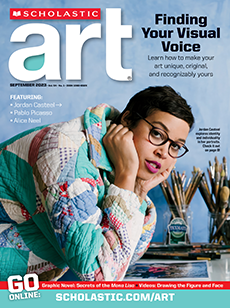In the 1920s, Alexander Calder captured the excitement of the circus by combining sculpture and performance art. After studying mechanical engineering, Calder began to experiment with painting and designing mechanical toys. To create the Cirque Calder, the artist studied real circus performers in action. He sought to capture their essence by using found objects to create moving sculptures of circus life. Calder himself presented the work in front of live audiences like a puppeteer, carefully operating each miniature sculpture with weights, string, and wire.
A Dynamic Artist
Alexander Calder combined sculpture and performance art in Cirque Calder
Skills Sheets
(10)
Skills Sheets
(10)
Skills Sheets
(10)
Skills Sheets
(10)
Skills Sheets
(10)
Skills Sheets
(10)
Skills Sheets
(10)
Skills Sheets
(10)
Skills Sheets
(10)
Skills Sheets
(10)
Lesson Plan
(2)
Lesson Plan
(2)
Text-to-Speech
